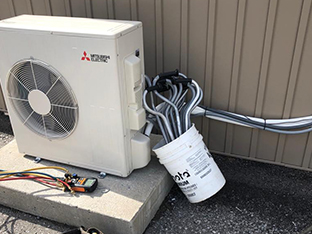As the name indicates, ductless cooling and heating systems function without the need of ducts. These systems have two different components: an exterior compressor and an inside evaporator. Ductless HVAC systems (also known as mini-split systems) are highly energy-efficient and offer constant room comfort.
The efficiency of Ductless Heat Pumps
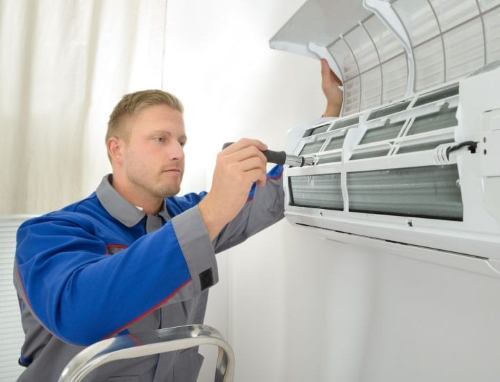
Ductless mini-split heat pumps use 60% less energy than typical home electric resistance-based heating systems because they transfer heat rather than create it. When compared to traditional room air conditioners, cooling expenses are reduced by 30%.
How it works
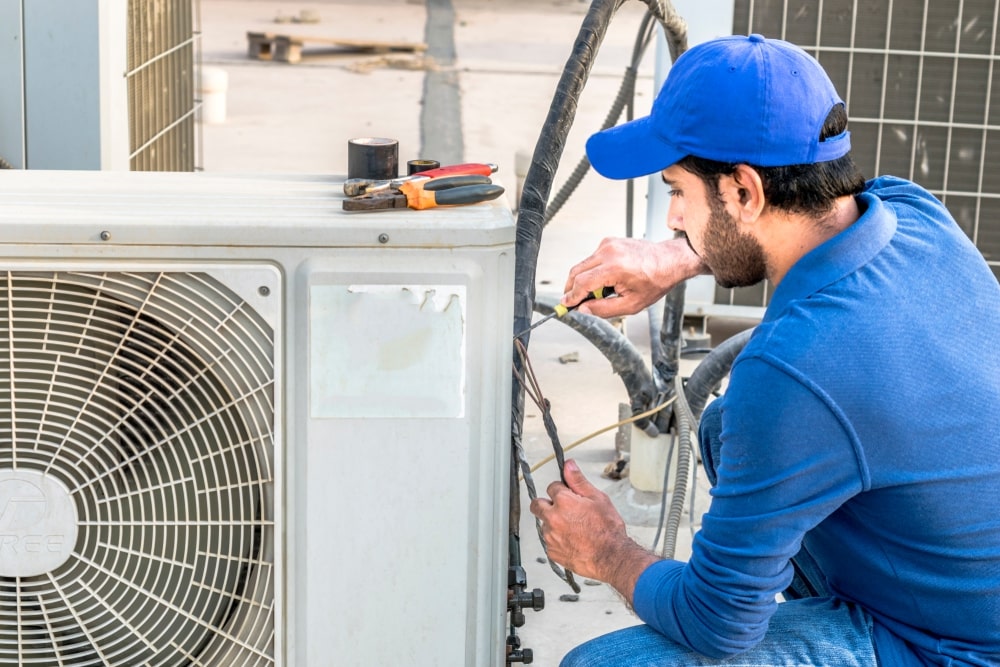
A ductless heat pump moves warm air from one area to another without using ducts. It has an outside compressor unit as well as inside air handling equipment. Depending on the number of pieces, the system is either single-zone use or a multi-zone use.
Heat is transmitted by a cycle of evaporation and condensation in a ductless heat pump system, with a refrigerant substance cycling through the structure through a compressor pump. Every ductless heat pump has two heat exchanger coils, one for condensing and one for evaporating the refrigerant. During the evaporation process, the refrigerant absorbs heat from the surrounding space. The condensing process, on the other hand, releases previously absorbed heat. The movement between these coils allows ductless heat pumps to maintain a target temperature specified by the thermostat.
Choosing a Ductless Heat Pump
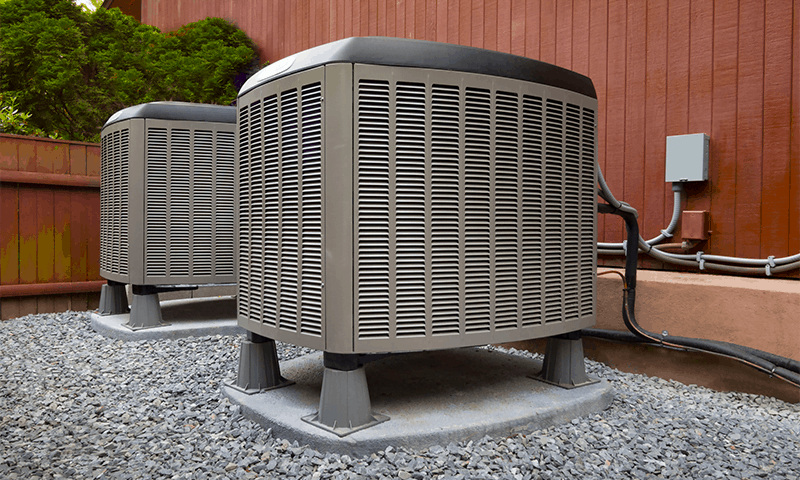
Heat Pump Cost
A ductless heat pump system with one interior air handling unit costs between $3,000 and $5,000, with the cost increasing as the number of people in the house increases. The initial installation expenses and long-term running costs might differ depending on the size and demands of your home, its location in the city, and even the kind of local weather. Check to see whether you qualify for a refund from your state or municipality (or even a hydro/electricity provider) on the installment of the split ductless heat pump. Your installer may even provide financing to aid with the installation’s initial costs for your ductless system.
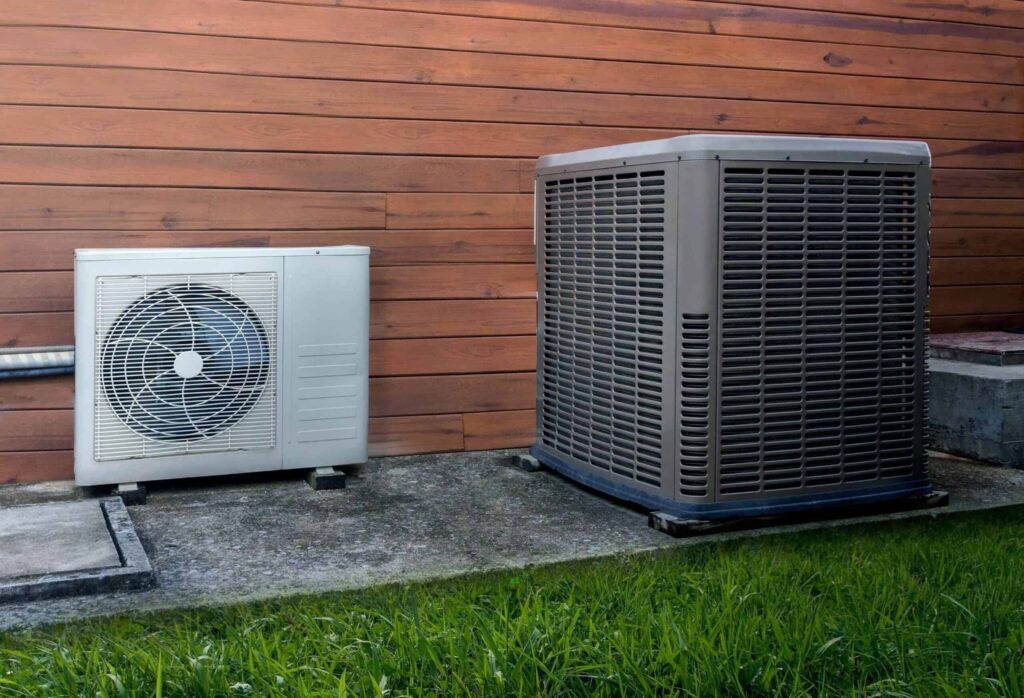
Heat Pump Size
Follow these steps to obtain a basic idea of the ductless size heat pump you need…
Multiply the width by the length of the room to get the square footage. Multiply the area by a factor of 25. This is the approximate British Thermal Unit (BTU) output you’ll require for that space, as calculated by ductless heat pumps. Steps 1 and 2 should be repeated for each room that requires a ductless unit.
Energy Star Certification- An ENERGY STAR certification indicates that a product fulfills certain federally mandated energy efficiency standards. Your ductless heat pump’s instructions indicate that it offers considerable energy savings and more.
Common & Advanced Features for Ductless Split Systems
Features vary based on the type or model you buy but some examples include:
- Smart sensors that detect people and blast air in their direction or away from them
- Sensors that detect the presence of people in the room will immediately turn on the system.
- Wi-Fi internet access
- Smartphone apps allow for temperature management from afar.
- Smart thermostats, such as Nest or Ecobee, are compatible.
Common Heat Pump Problems and Solutions
- Water Leak (Indoors) – A drain line and drain pan should capture all runoff water and divert it outdoors. If you notice a leak, you should get your heat pump serviced. You’re probably dealing with a clogged drain line, a damaged condensation drain pan, or another drainage issue.
- Water Leak (Outdoors)- That implies that having condensation on your outside unit is normal when your heat is turned on. If you see more condensation leaking from this outside unit than usual, one problem might be excessive icing on the coils. You may always call us if you’re not sure whether the pool of water around your heat pump is a problem or not.
- Refrigerant Leak- Ice can develop and build up on the evaporator coils if the refrigerant levels in your heat pump drops below what is necessary and melt causing the leak. This can reduce your system’s efficiency. It’s best to book a heat pump repair appointment with a local HVAC expert like us who can quickly and efficiently adjust your heat pump’s refrigerant levels.
- Dirty Filter- The cold evaporator coil in your heat pump collects condensation from the interior air and drains it into a pan. This coil can become defective and stop working if it becomes caked with dirt and dust, allowing water to drip and pool on the ground. If you want very clean coils, give us a call and we’ll take care of it for you.
- Frozen Evaporator Coil- if your heat pump’s refrigerant levels drop below what’s needed, ice can develop and pile up on the evaporator coils. However, if you switch off your unit, the ice typically melts, causing your heat pump to leak. If this happens, your heat pump is most likely leaking refrigerant. It’s important to remember that recharging your refrigerant might be dangerous. It’s better to book a heat pump repair appointment with a local HVAC expert like us who can quickly and efficiently adjust your heat pump’s refrigerant amounts.
- AC Fan Failure- this is a common problem that occurs with the wire and compressor within your ductless mini-split heat pump. We can pinpoint the issue immediately and thus it is best to give us a call for when your AC’s fan stops working.
- Heat Pump Is Giving off Bad Odor- Mold or mildew developing inside your ductwork or on your system’s evaporator coils is typically to blame. They thrive in damp environments. You need to be careful handling mould to avoid it spreading and contact our expert team to handle the issue for you.
Using Heat Pumps in Winters & Summers for ductless heating and cooling
- Winters – Heat pumps rely on refrigerant, the same substance that powers your refrigerator and air conditioner. Depending on the pressure it is subjected to, the refrigerant may absorb and release heat. The compressor of a heat pump squeezes the refrigerant, causing it to take in and absorb the heat. The heat pump then transports the liquid refrigerant inside your home and releases the heat. As a result, your heat pump will emit heat into your home during the winter.
- Summer – In the summer, you can reverse the direction of your ductless heating. Instead of bringing the heat in from the outside, the heat pump gathers heat from within the home and delivers it out. These systems are frequently hydronic systems or based on water. They circulate water throughout the house to gather heat. The heat is then efficiently taken from the water and released outside by the refrigerant. That means, in the summer months, the heat pump, like your air conditioner, can effectively chill your entire home. The advantage is that instead of counting on various HVAC equipment for different seasons, you may just need 1 heat pump to cool and heat your house.
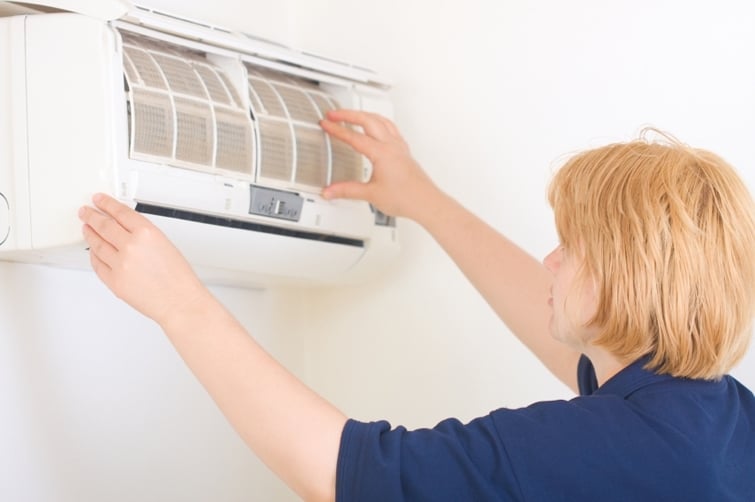
The objective of THERMENERGY’s employees is to keep you happy. You can stay cool in the summer and toasty in the winter with a ductless heat pump system or expert maintenance to your current one. To discover more about heat pumps and how they may help your family, contact us now.

